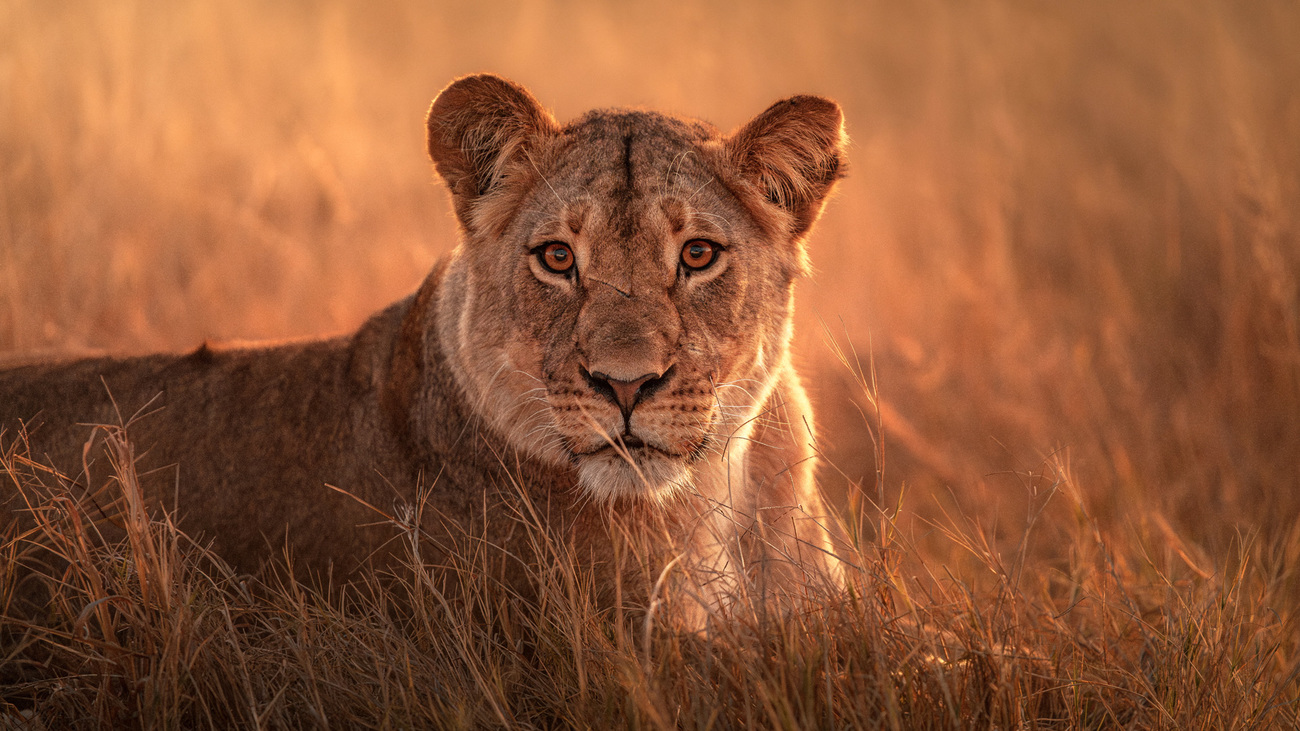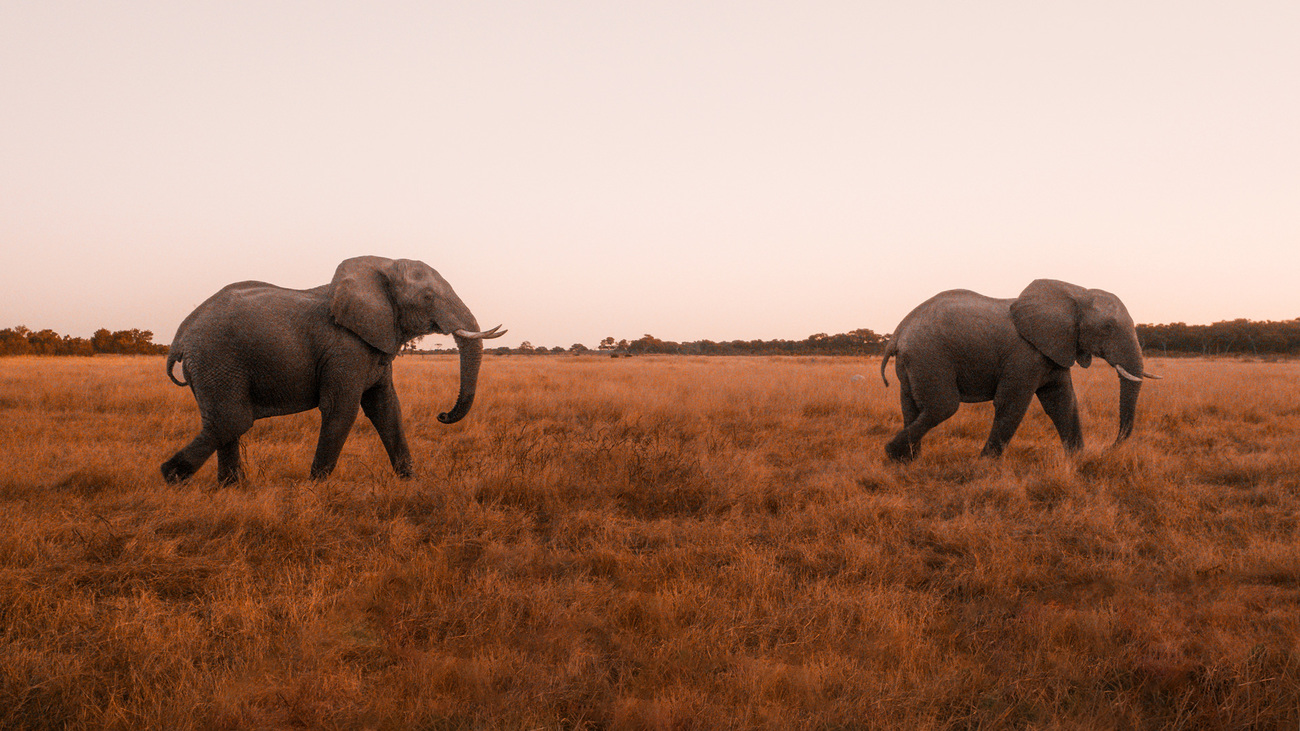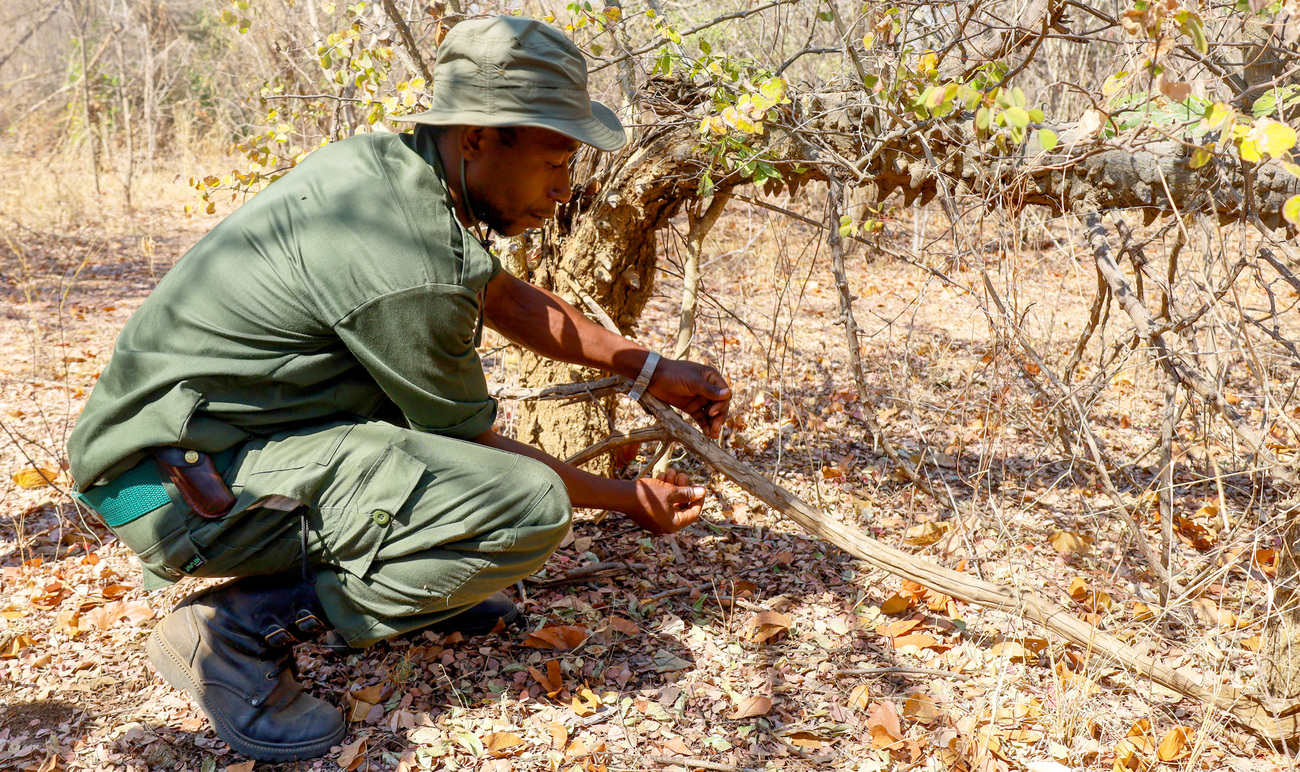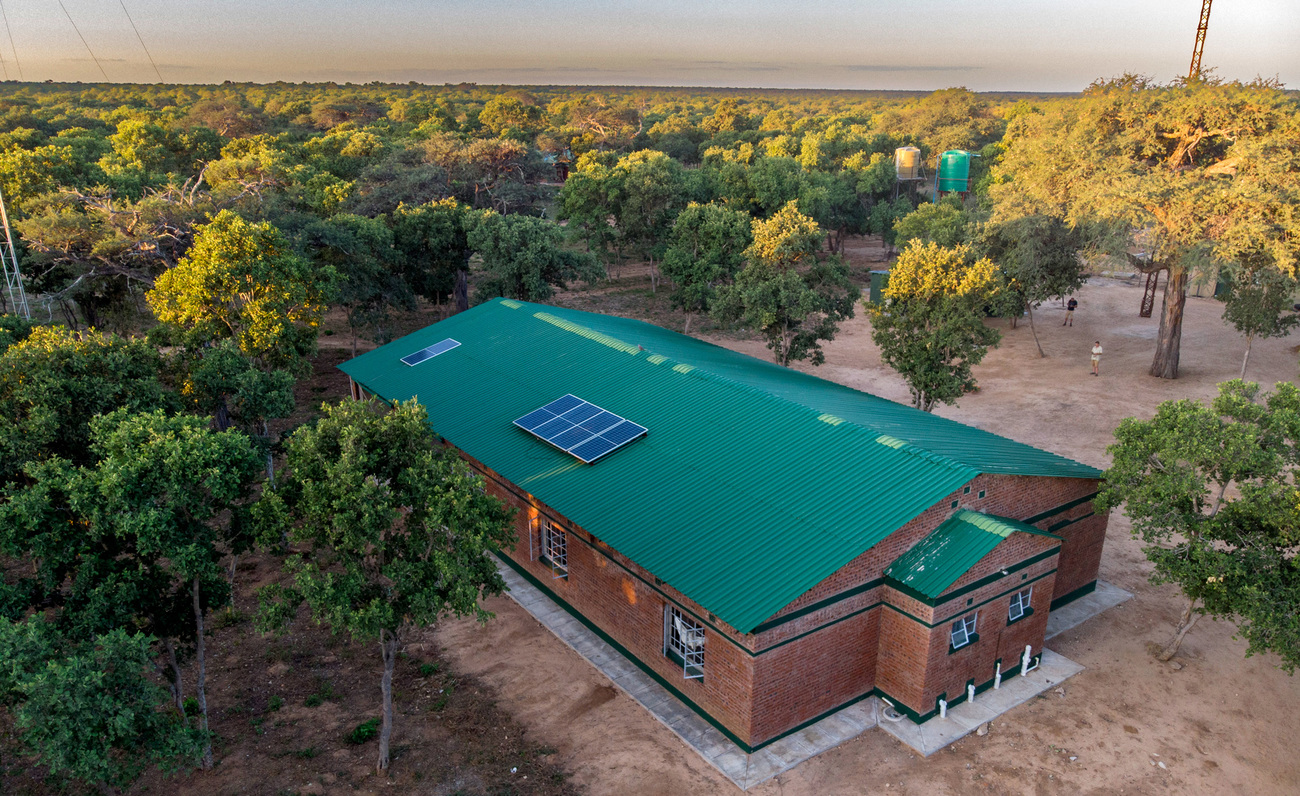Elephant Nursery and Landscape Project - Zimbabwe
Giving orphaned elephants a second chance at a life back in the wildWildlife conservation in Zimbabwe
Wildlife conservation in Zimbabwe
Zimbabwe is home to a diverse range of landscapes, ecosystems, and wildlife, including elephants, lions, and rhinos. However, the future and health of this rich biodiversity is under threat. In this article, we explore IFAW’s critical conservation and rescue work in Zimbabwe, highlighting our efforts to protect wildlife and preserve the country’s natural heritage.

Zimbabwe’s unique wildlife
As one of the most biodiverse countries in Africa, Zimbabwe boasts a unique array of wildlife. It is among the few countries in sub-Saharan Africa with large populations of lions, leopards, and Cape buffalos, as well as an increasing rhino population.
African savannah elephants
Zimbabwe is also home to important populations of the endangered African savannah elephant. As ecosystem engineers and renowned roamers, these elephants interact with their environment in unique and critical ways as they move through it, sometimes covering up to 60 kilometres (37 miles) per day. Their impact is felt far and wide as they dig to create watering holes and promote plant biodiversity by clearing overgrown bushes, spreading seeds, and providing high-quality fertiliser through their faeces.
While the elephants’ behaviour might seem destructive, it actually provides food, water, space, and shelter for all kinds of animals across East and southern Africa, including Zimbabwe. This is why IFAW’s Room to Roam initiative covers landscapes in Zimbabwe, with the aim of providing protected safe passages for African savannah elephants to fulfil their role as keystone species within the country and beyond.
Lions
Lions are another example of a keystone species in Zimbabwe. As an apex predator, lions help maintain the balance of their ecosystems by regulating prey populations and preventing overgrazing. They prey on herbivores like wildebeests, Cape buffalo, plains zebras, and antelopes. The lion population in Zimbabwe is critical to the species’ overall survival, as these big cats continue to disappear across the continent.
Black rhinos
Zimbabwe is also home to the black rhinoceros, one of Africa’s most endangered species. Black rhinos have been driven to the brink of extinction by poaching, fueled by the illegal trade in rhino horn. Conservation efforts are ongoing to protect and increase their numbers through rigorous anti-poaching measures and habitat protection.
Zimbabwe, located in southern Africa, is home to the world's fourth-largest population of black rhinos, following South Africa, Namibia, and Kenya. The country is estimated to have approximately 616 black rhinos and 417 white rhinos, making it a crucial stronghold for both species. The presence of these iconic animals highlights the conservation efforts and natural habitat suitability present in Zimbabwe.
The main threat facing rhinos is poaching for their horns, as demand has escalated in Asian countries, especially in Vietnam. Despite having no proven medicinal value and being made of keratin, rhino horn has long been used in traditional medicines.
African wild dogs
Another important Zimbabwean animal is the African wild dog, which is one of the most endangered carnivores in Africa. These highly social animals are known for their unique pack dynamics and hunting techniques, but their populations are dwindling due to habitat fragmentation, human-wildlife conflict, and infectious disease.
Other notable animals in Zimbabwe
Zimbabwe’s waterways and wetlands also support a rich diversity of life, including the Nile crocodile and the endangered African fish eagle.
Some species of the elusive pangolin—the most trafficked mammal in the world—can also be found in Zimbabwe. These nocturnal creatures play a vital role in the ecosystem because they control insect populations, but pangolins are critically endangered due to the illegal wildlife trade.
This incredible biodiversity makes Zimbabwe a vital focus for conservation efforts. Protecting these species will help preserve the country’s rich ecological diversity.
Zimbabwe’s diverse protected landscapes
Alongside 627 bird species, 270 mammal species, 197 reptile species, 120 amphibian species, and 145 fish species, Zimbabwe boasts an impressive 6,398 native or naturalised plant species. As you would expect from a country with such a rich variety of flora and fauna, Zimbabwe’s landscape is incredibly diverse, encompassing various geographical regions, each with its own unique features and ecosystems.
Although open savannahs and vast grasslands extend across much of the country, significant portions of Zimbabwe are covered by woodlands and forests, especially in the eastern highlands. These areas are home to diverse plant species and provide the ideal habitat for a wide range of bird species, as well as primates and small carnivores. Zimbabwe also boasts several wetlands and riverine systems, such as the Zambezi River and Lake Kariba, which support abundant birds, hippopotamuses, and crocodiles.
Zimbabwe’s protected area network is home to most of the country’s biodiversity and covers 106,837 square kilometres (41,269 square miles), equating to 27.2% of Zimbabwe’s land mass. Notable protected landscapes and national parks in Zimbabwe include Hwange National Park, Mana Pools National Park, and Matobo National Park, among others. The Zimbabwe Parks and Wildlife Management Authority (ZimParks) manages the majority of these natural reserves, while the Forestry Commission is responsible for gazetted forests.

Hwange National Park
Spanning 14,650 square kilometres (5,656 square miles), Hwange National Park is Zimbabwe’s largest and most diverse national park. It is renowned for its expansive plains, varied woodlands, and rich abundance of wildlife. Not only does Hwange host all of Zimbabwe’s protected species, but it is also the only place in the country where the rare brown hyena and the gemsbok—a unique species of antelope—can be found.
Mana Pools National Park
Mana Pools National Park covers 2,196 square kilometres (848 square miles) of land along the Zambezi River. This unique landscape is characterised by seasonal floodplains that transform into a network of lakes after each rainy season, creating a crucial water source for wildlife. During the dry season, Mana Pools becomes a vital refuge for wildlife from surrounding regions as elephants and buffalo migrate from drier areas, while predators such as lions, leopards, and African wild dogs follow these herbivores as they roam in search of water.
Matobo National Park
Matobo National Park, the oldest park in Zimbabwe, spans 424 square kilometres (164 square miles) of the Matobo Hills, a region known for its dramatic granite formations. This area is rich in botanical diversity, boasting over 200 species of trees and a variety of aloes and wild herbs. The park supports a wide range of wildlife, including white rhinos, zebras, giraffes, wildebeests, ostriches, and black eagles. Matobo also has the world’s densest leopard population, thanks to the park’s abundance of their favourite prey, the rock hyrax.
IFAW’s wildlife conservation work in Zimbabwe
IFAW has dedicated significant resources to wildlife conservation in Zimbabwe, recognising the country’s unique biodiversity and the urgent need to protect its range of thriving ecosystems. Some of our key initiatives include:
Removing snares around Hwange National Park
Snares placed by poachers can cause slow and often senseless deaths for the animals they trap. In a bid to protect the wildlife in and around Hwange National Park, IFAW supports a team of rangers staffed by the Dete Animal Rescue Trust (DART) as they undertake the tedious task of removing snares from a buffer area surrounding the park. As a direct result of the team’s dedication and hard work, the number of snares found in the area plummeted by more than 80% in under a year. While the team found 231 snares between July and September 2022, they only found 43 between April and June 2023.

Supporting the first Zimbabwe elephant nursery
IFAW’s partner organisation Wild is Life (WIL) established the Zimbabwe Elephant Nursery (ZEN)—the first elephant nursery in the country—back in 2012. Since then, we have supported WIL-ZEN as it rescues and rehabilitates young elephants orphaned due to poaching and human-wildlife conflict.
Committing to wildlife conservation with a 25-year partnership
Building on the successes of their existing five-year partnership, IFAW and ZimParks signed a historic 25-year agreement in 2023 to secure a US$50 million commitment to support wildlife conservation in Hwange National Park.
Providing bicycles to safeguard students from wildlife attacks
In 2024, a joint initiative between IFAW and ZimParks called Riding for Conservation and Education provided 100 bicycles to students attending schools in communities around Hwange National Park. The initiative aims to reduce the risk of students facing danger from elephants, lions, and other wildlife while on their way to school.
Protecting lions and cattle with innovative bomas
To address human-wildlife conflict in buffer communities surrounding Hwange National Park, we are proud to implement the DAPZIM project with financial support from the Australian Embassy’s Direct Aid Program.
The project aims to scale up current human-wildlife conflict management activities by establishing an early warning system for the primary response team. Their primary role is to respond to conflict situations and support families affected by human-wildlife conflict. In addition, the project seeks to establish predator-proof bomas to help mitigate livestock predation by lions.
Opening Makona ranger base
IFAW understands the importance of providing wildlife rangers with everything they need to fulfil the arduous and often dangerous requirements of their role. It was through this understanding that we established Makona, a permanent base to enhance ranger welfare and wildlife protection as part of a five-year conservation agreement between IFAW and ZimParks.
The base, which opened in April 2023, operates as the first modern-era ranger station in Hwange National Park. As well as supporting the prevention of wildlife crime, Makona safeguards local communities and provides accommodation for more than 24 rangers and their families.

Training and equipping rangers in Panda Masuie reserve
Panda Masuie Forest Reserve, another area of protected land in Zimbabwe, provides a safe haven for rescued and wild elephants. As part of an EU-co-funded initiative with support from IUCN Save Our Species, IFAW trains and equips rangers in their efforts to secure Panda Masuie by tracking the movements of poachers and reporting sightings of rare and endangered species.
Establishing human-wildlife conflict primary response teams
With generous financial support from the Australian Embassy’s Direct Aid Program (DAP), in partnership with ZimParks, and with the cooperation of local authorities including Hwange, Tsholotsho, and Lupane Rural District Councils, as well as traditional leaders, IFAW is currently undertaking a project to elevate existing human-wildlife conflict management initiatives. This will be achieved through the establishment of an early warning system involving voluntary community guardians equipped with SMART technology, as well as the implementation of an innovative predator-proof bomas (PPBs) system.
Supporting conservation through tourism infrastructure
As part of the ongoing restoration of Hwange National Park, IFAW and ZimParks announced the construction of a new multi-purpose complex at the park’s main entrance point in December 2023. By positioning Hwange as a leading tourism destination, this kind of quality infrastructure helps IFAW support conservation initiatives across the country.
Related content
Our work can’t get done without you. Please give what you can to help animals thrive.